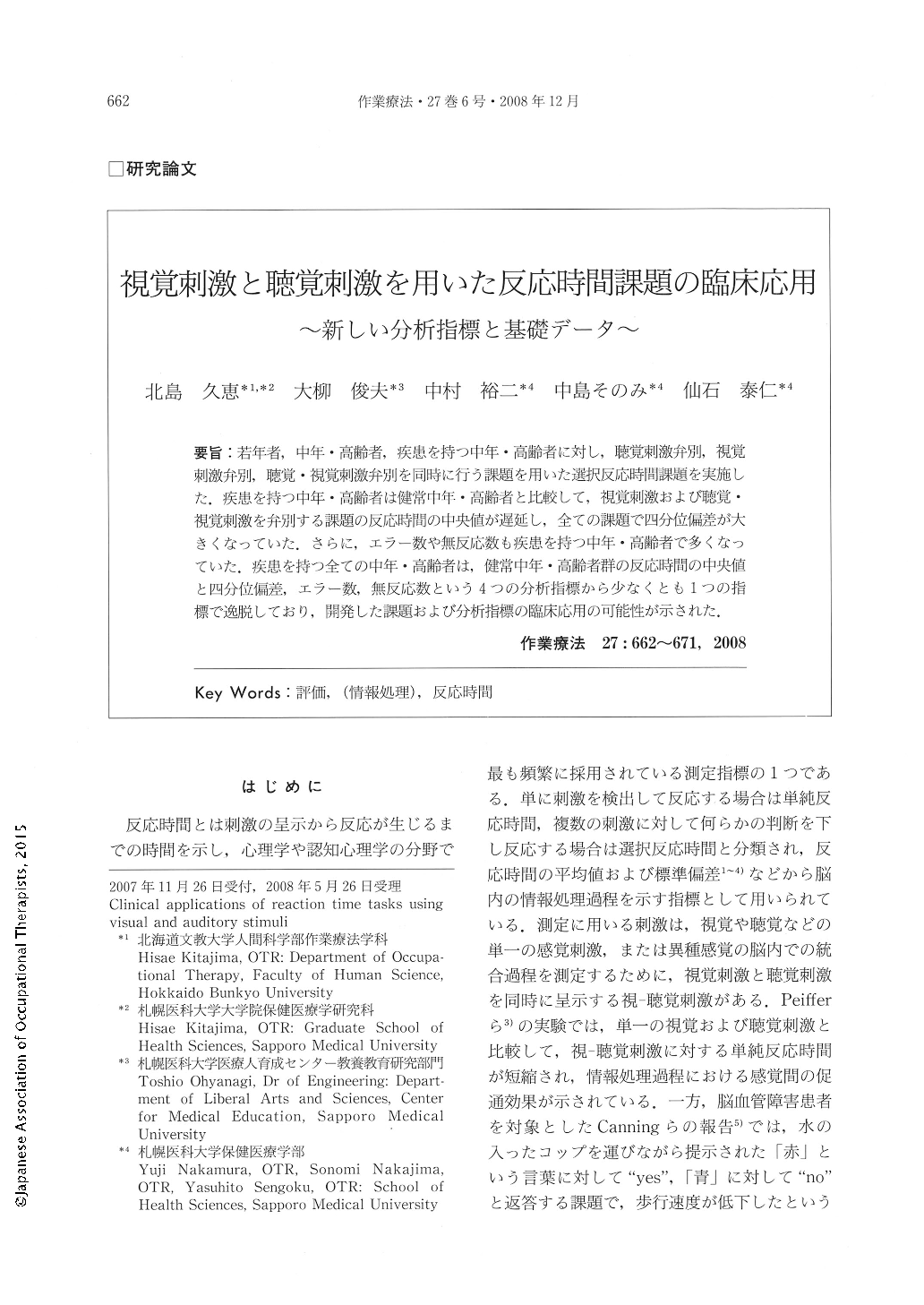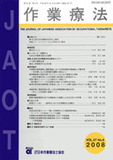Japanese
English
- 販売していません
- Abstract 文献概要
- 1ページ目 Look Inside
- 参考文献 Reference
- サイト内被引用 Cited by
要旨:若年者,中年・高齢者,疾患を持つ中年・高齢者に対し,聴覚刺激弁別,視覚刺激弁別,聴覚・視覚刺激弁別を同時に行う課題を用いた選択反応時間課題を実施した.疾患を持つ中年・高齢者は健常中年・高齢者と比較して,視覚刺激および聴覚・視覚刺激を弁別する課題の反応時間の中央値が遅延し,全ての課題で四分位偏差が大きくなっていた.さらに,エラー数や無反応数も疾患を持つ中年・高齢者で多くなっていた.疾患を持つ全ての中年・高齢者は,健常中年・高齢者群の反応時間の中央値と四分位偏差,エラー数,無反応数という4つの分析指標から少なくとも1つの指標で逸脱しており,開発した課題および分析指標の臨床応用の可能性が示された.
This study investigated the clinical application of the following three choice reaction time tasks: auditory stimuli discrimination tasks, visual stimuli discrimination tasks, and visual-auditory stimuli discrimination tasks. Healthy young subjects, healthy aged subjects, and aged patients took part in the study. In order to analyze the data from the three tasks, four measures were employed: median deviation of reaction times, quartile deviation of reaction times, the number of errors and no response in the tasks. The mean median of aged patients was larger than that of healthy older subjects in visual stimuli discrimination and visual-auditory stimuli discrimination tasks. The mean quartile deviations of aged patients were larger than those of healthy older subjects in all tasks. The number of errors and no responses increased with aged patients. From these results, we set reference values for each of the four measures by using data from healthy aged subjects. It was revealed that at least one measure deviated from its reference value for all aged patients. We concluded that the tasks and four measures and their reference values could be useful for clinical evaluation of aged patients.

Copyright © 2008, Japanese Association of Occupational Therapists. All rights reserved.


